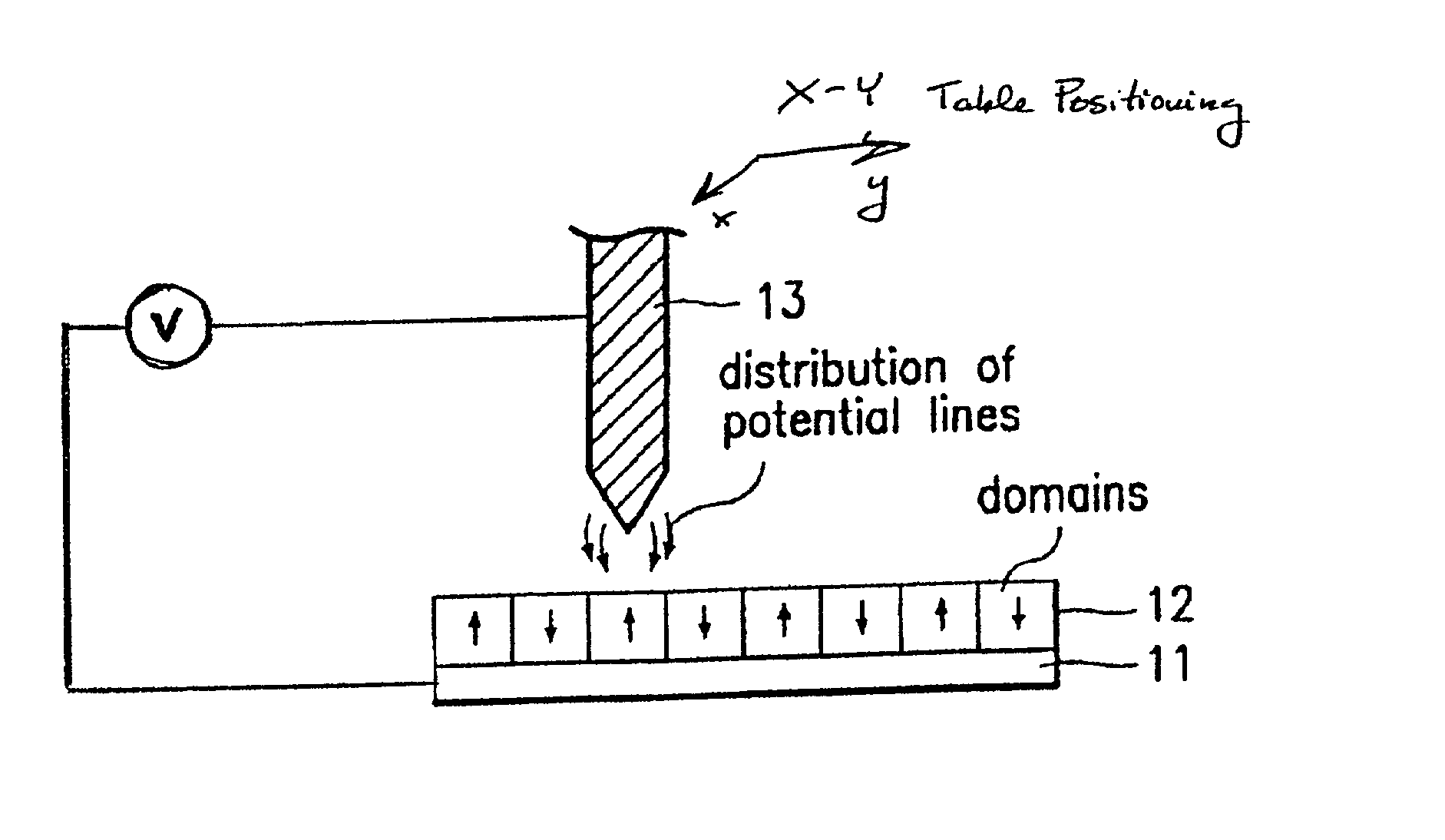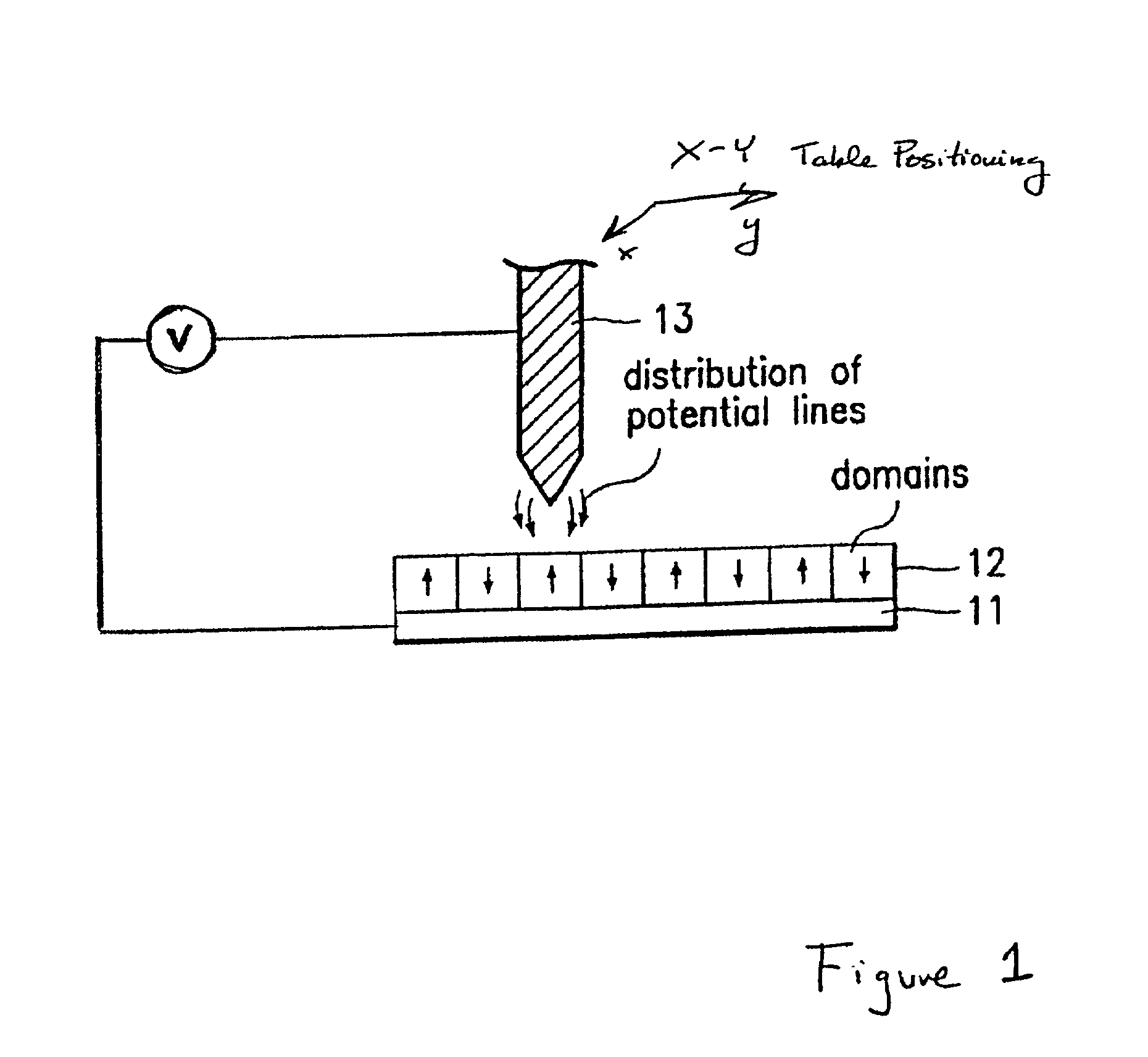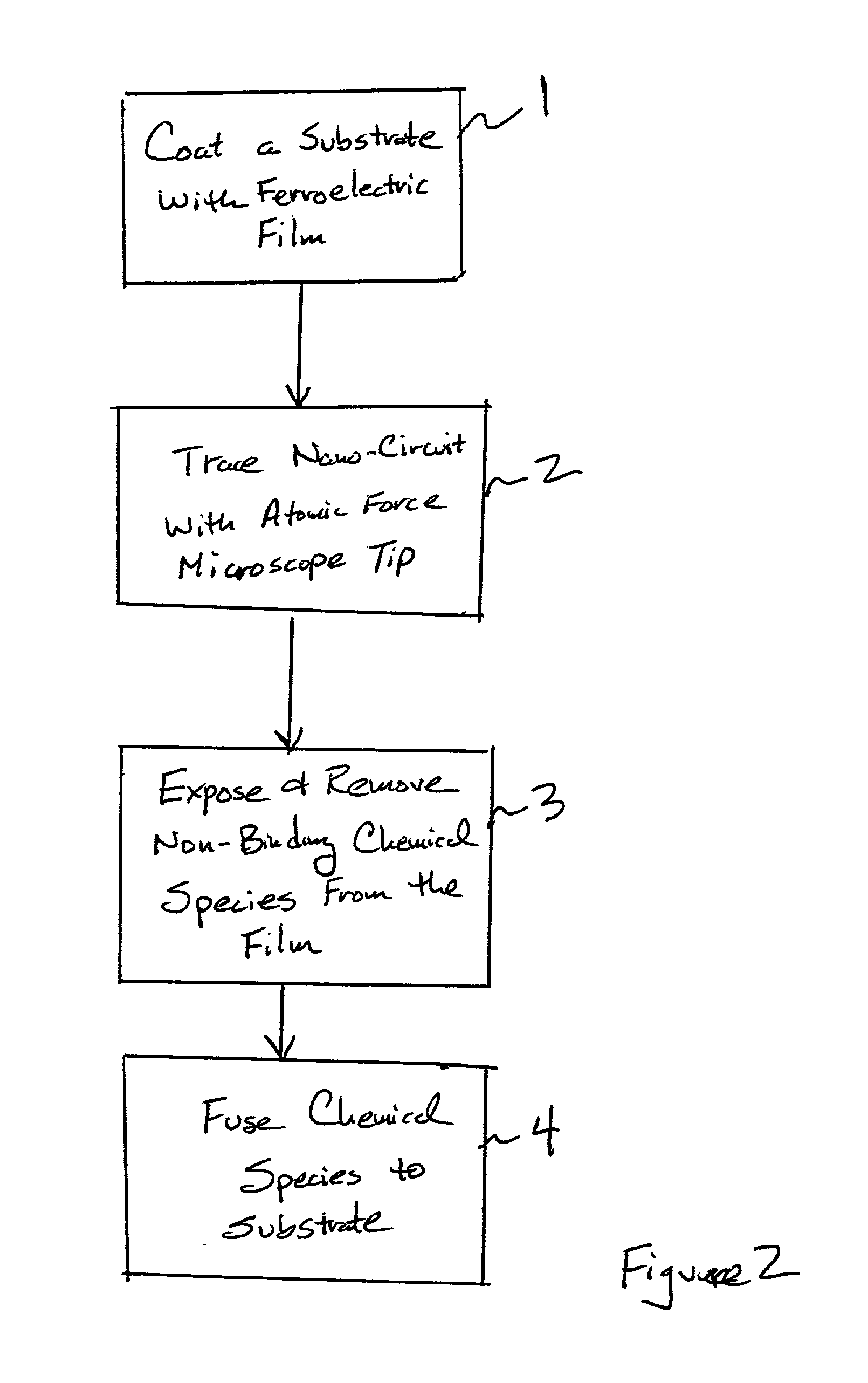Assembling arrays of small particles using an atomic force microscope to define ferroelectric domains
a technology of atomic force microscope and ferroelectric domain, which is applied in the field of structure with functional length scale, can solve the problems of difficult manipulation of nanoscale elements, difficult to modulate nanoparticle/substrat interaction, and formidable challenge of magnetic storage system
- Summary
- Abstract
- Description
- Claims
- Application Information
AI Technical Summary
Problems solved by technology
Method used
Image
Examples
Embodiment Construction
[0016] In referring now to FIGS. 1 and 2, the invention provides a method of producing a structure by pre-patterning a surface with nanoscale resolution to assemble structures of nanoparticles, molecules, or localized products of molecular decomposition. Stable ferroelectric domains on the nanometer scale can be prepared in various states of remnant polarization by use of an atomic force microscope (AFM) using a properly biased metal tip. This allows persistent patterning of the surface potential with nanoscale resolution which is then used to draw a locus where nanoparticles or molecules are induced to assemble by the strong localized electrostatic interaction when deposited from a solution with non-polar solvent, or where selective molecular decomposition in a CVD process occurs. The proximity of two oppositely polarized surface regions and the magnitude of the polarization can be adjusted to control the relative field strengths at the surface and thereby control the deposition of...
PUM
 Login to View More
Login to View More Abstract
Description
Claims
Application Information
 Login to View More
Login to View More - R&D
- Intellectual Property
- Life Sciences
- Materials
- Tech Scout
- Unparalleled Data Quality
- Higher Quality Content
- 60% Fewer Hallucinations
Browse by: Latest US Patents, China's latest patents, Technical Efficacy Thesaurus, Application Domain, Technology Topic, Popular Technical Reports.
© 2025 PatSnap. All rights reserved.Legal|Privacy policy|Modern Slavery Act Transparency Statement|Sitemap|About US| Contact US: help@patsnap.com



